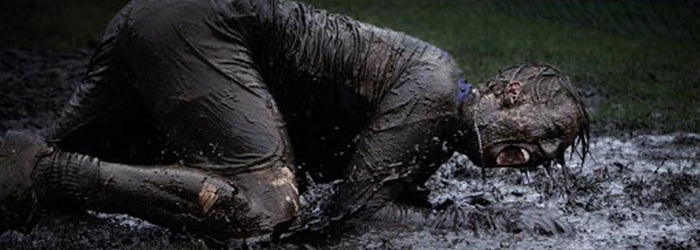TIP 1: Train the right way
Keep in mind that an obstacle run is really substantially different from a long run running. Because of the obstacles, it requires a lot more strength and a lot less endurance, considering you can take a temporary rest from running. Hence, our advice is to focus more on interval training. For example, run for 30 seconds at 80% of your ability, followed by 30 seconds at 50%. Repeat this process 10 times. Can you run longer? Then increase the intensity, or reduce the interval rest.
You can also train at a fixed intensity. In addition to regular running, you also have pace runs. In these pace runs, you run exactly at the pace that you just talk normally. Keep this up for 20 to 30 minutes.
In conclusion, it's important to not always train in a set pattern. Use some variety by running up and down a hill, or swimming in the local pool.
TIP 2: Take plenty of rest
At least as important as training is rest. Schedule enough rest days for yourself after your workouts and before your obstacle run. There is no point in going to the limit every day. Besides not giving your muscles time to recover this way, it also increases the risk of injury. Nothing is more annoying than having to cancel the obstacle run after all your efforts. Really important: don't overdo it!
TIP 3: Wear appropriate clothing
There is a very good chance that you will stumble across the finish line soaking wet from mud and/or water. To make this as pleasant as possible, it is wise to choose clothing that 1) can get dirty, 2) is tight and 3) repels water as much as possible.
Let the length of your clothing depend on the temperature and your pain threshold. For example, long pants protect well against but are a lot warmer. If it gets really cold, you can possibly put on a windbreaker. It is also important to have plenty of grip. Keep this in mind when choosing your pair of shoes. If necessary, you can wear gloves. Gloves also need to be tight and have a lot of grip.
It is important to especially test out all of your clothing. It is not nice to find out only at the race itself that your shoes are too tight or your pants too loose.
Last but not least: don't forget to bring dry clothes (and shoes) for after the race!
TIP 4: Watch your food and drink
Now that you have trained, rested properly and have the proper clothing, it is important to ingest enough fuel. Make sure you eat and drink well before and after the race. Choose a good carbohydrate-rich meal before the run and a protein-rich meal after the run. Ideally, take a FIRST gum 15 minutes before the start. During the run, you can take another energy gum or a gel. Also remember that it is important to hydrate properly. Drink plenty of water before, during, and after your run.
TIP 5: Focus on performance and dose
Finally, the golden tip: focus on execution. Use your core at the obstacles and run upright through them. This will allow your lungs to fill with air more easily. In addition to execution, dosing your energy is just as important. Make sure you don't deplete all your energy at the first two obstacles. Start slowly and find out how much energy the course requires of you.

